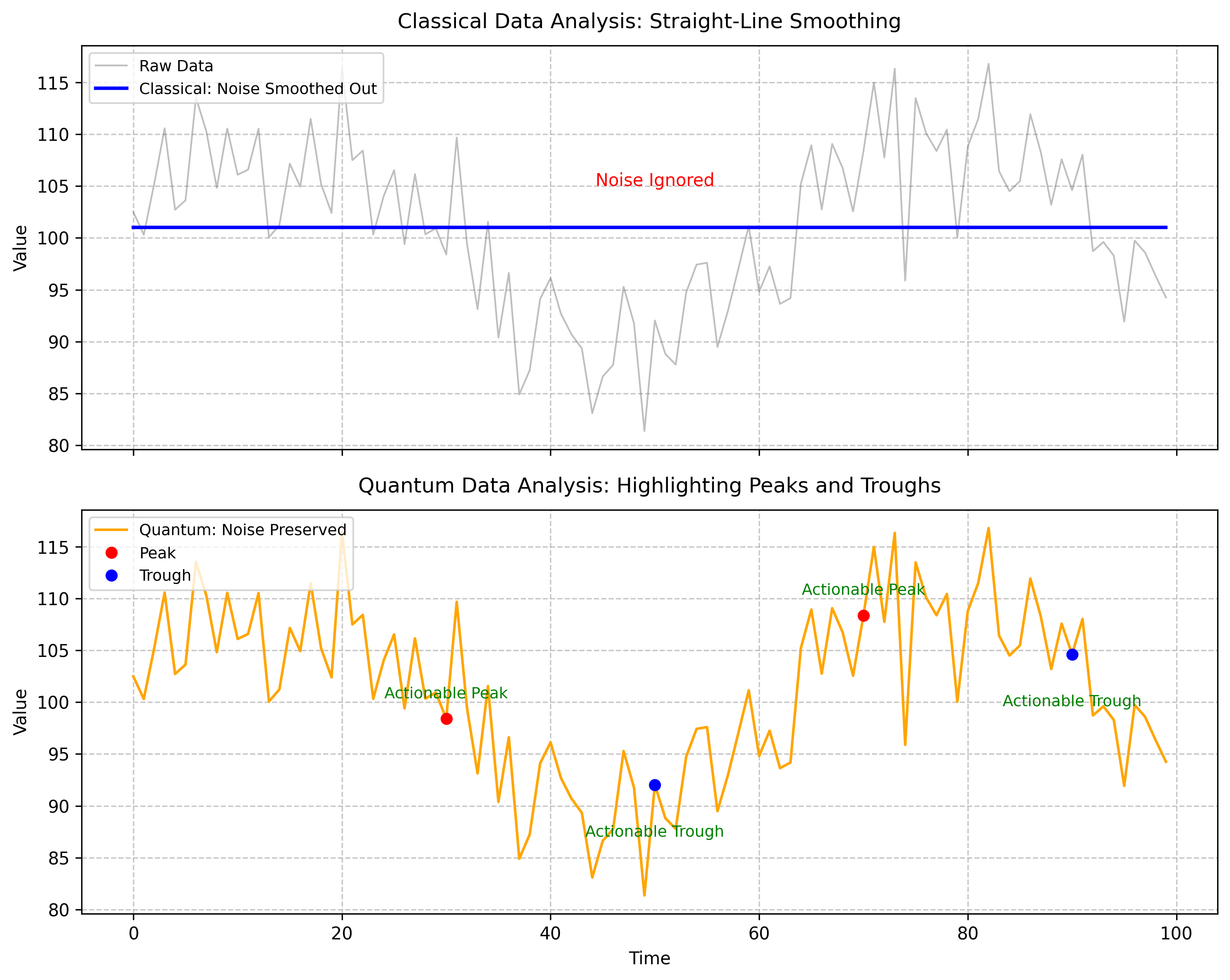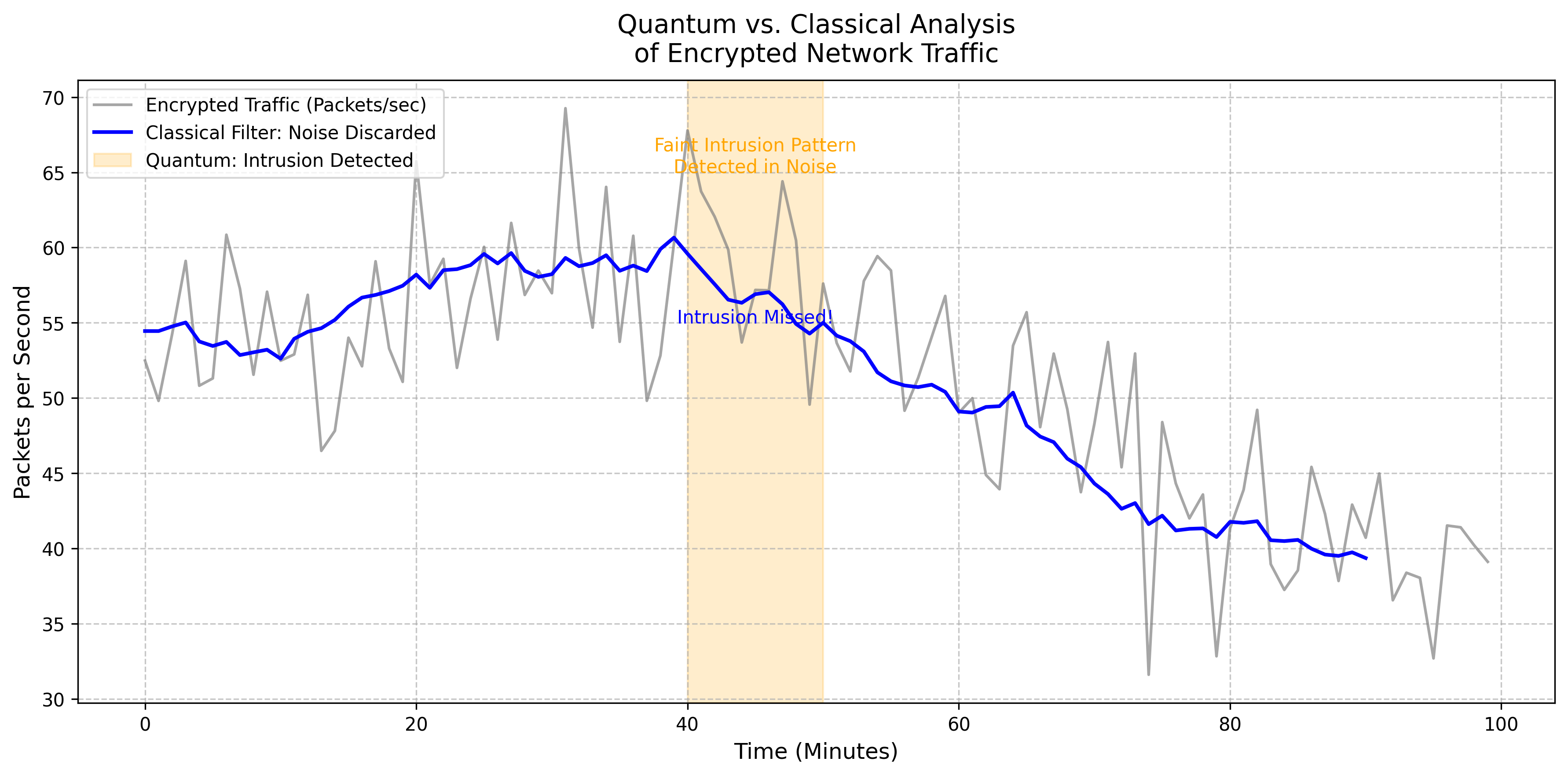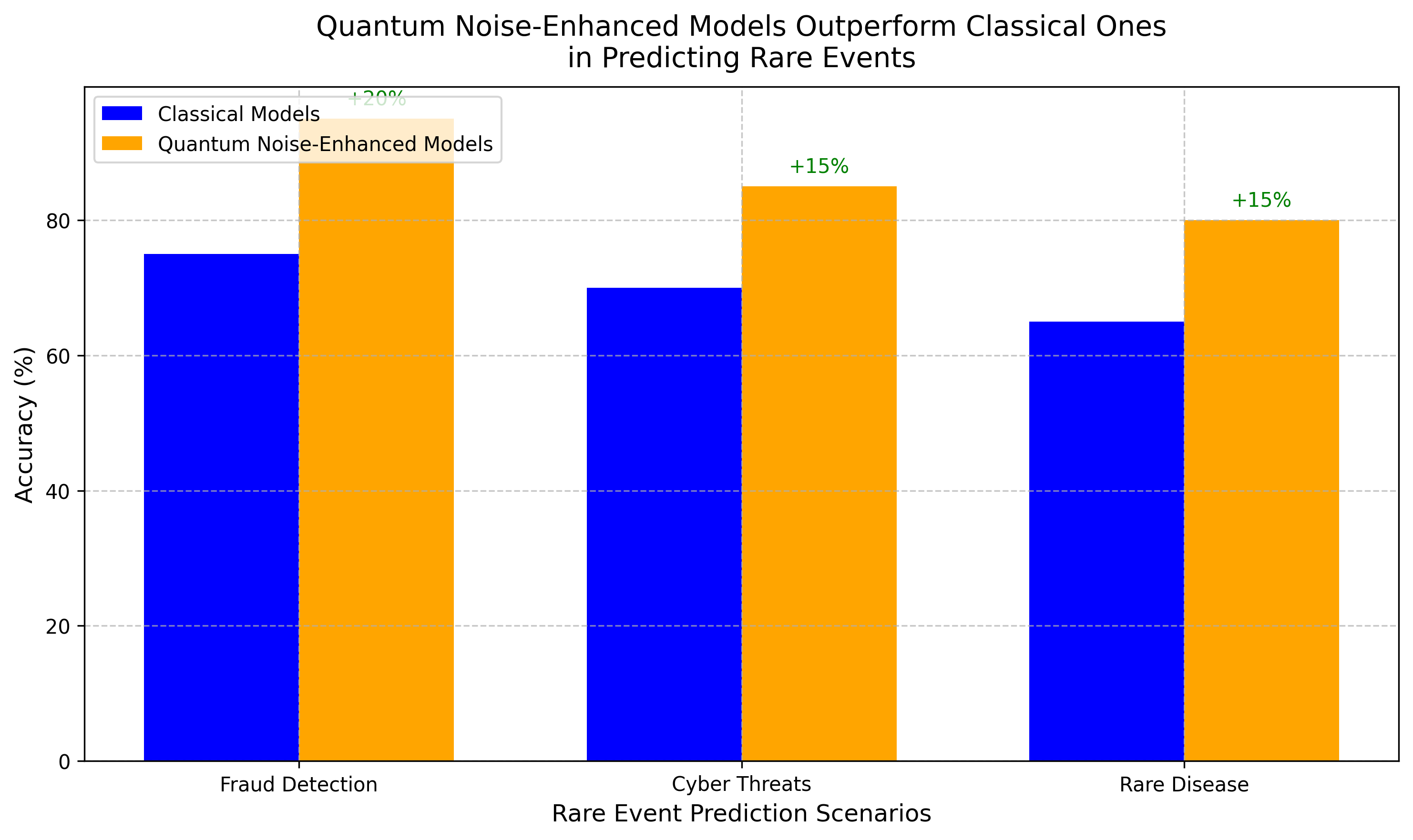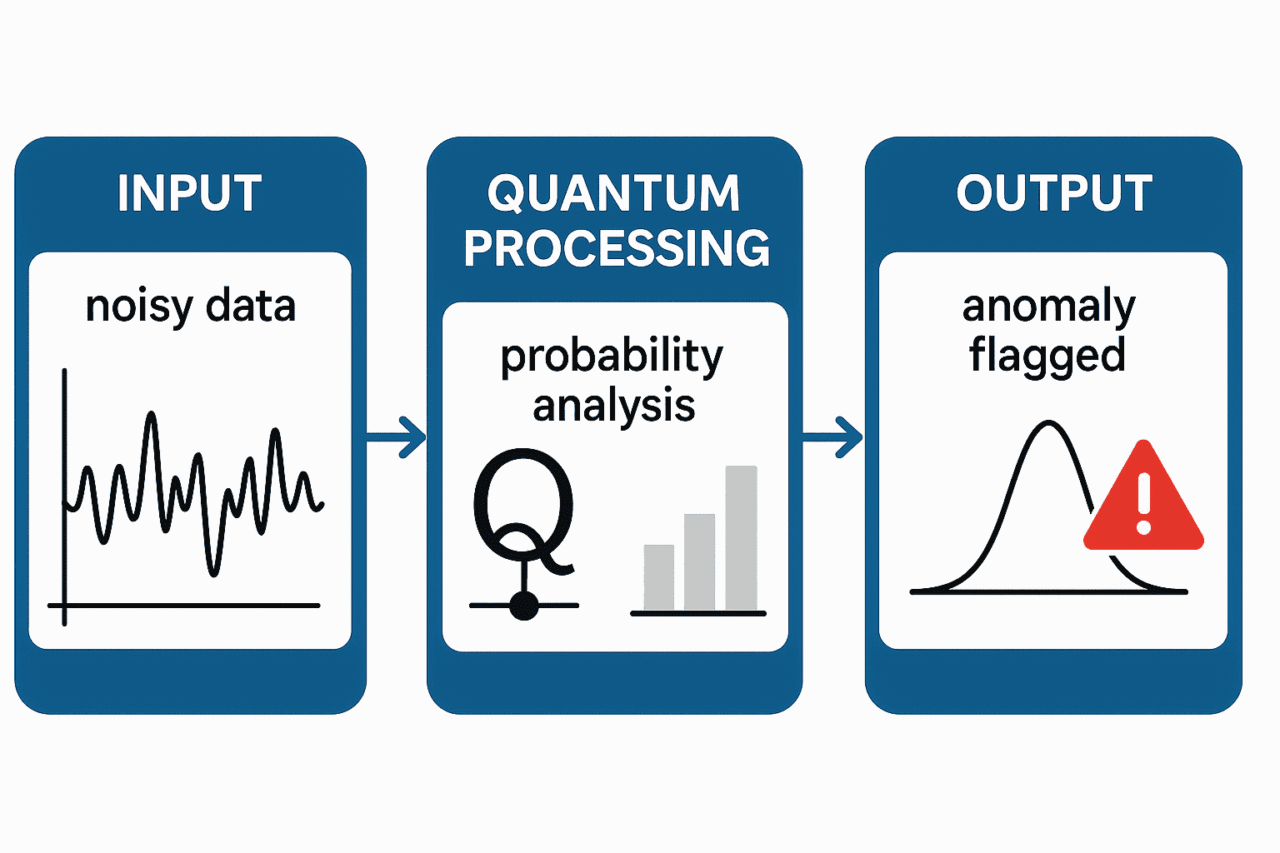Leveraging Quantum Imperfections to Power Next-Gen Analytics
Imagine a world where the chaos of quantum systems—once seen as a flaw—becomes your competitive edge. Quantum noise, the unpredictable ripples in qubit behavior, is no longer just a challenge to overcome; it’s a treasure trove of untapped insights waiting to be harnessed. This article explores how quantum noise can revolutionize data analytics, offering Businesses a pathway to uncover hidden patterns, detect anomalies, and stay ahead in a data-driven future.
What Businesses Are Looking For
Businesses —whether in finance, healthcare, cybersecurity, or beyond—want actionable insights, faster decision-making, and a competitive advantage. They’re seeking:
- Tools to reveal hidden trends in complex, noisy datasets.
- Real-time anomaly detection to mitigate risks (e.g., fraud, breaches, or health crises).
- Future-proof solutions that integrate emerging technologies like quantum computing.
- Practical applications with measurable ROI, not just theoretical promises.
Here’s how quantum noise delivers on these needs, with examples, visuals, and a roadmap to success.
1. Decoding Quantum Noise: The Chaos That Holds the Key
What Is Quantum Noise and Why Should Businesses Care?
Quantum noise arises from the inherent unpredictability of quantum systems, causing qubits (quantum bits) to fluctuate in ways classical bits never do. Unlike errors in traditional computing, this noise is baked into the laws of quantum mechanics—it’s unavoidable, but it’s also a potential asset.
For Businesses , this matters because:
- It impacts the reliability of quantum computing, a technology poised to transform industries.
- It offers a unique lens to analyze data that classical systems can’t replicate.
Example: Imagine a financial firm analyzing stock market volatility. Classical systems might filter out “noise” as irrelevant, but quantum noise analysis could reveal subtle signals of an impending crash—signals too faint for traditional tools to catch.

The Uncertainty Principle: A Hidden Opportunity
Heisenberg’s Uncertainty Principle tells us we can’t pin down a quantum state with perfect precision. For data scientists, this isn’t a curse—it’s a blessing. Quantum noise introduces a layer of randomness that can expose structures in data that deterministic models miss.
The chart comparing classical vs. quantum data analysis—classical as a straight line smoothing out noise, quantum as a jagged wave highlighting hidden peaks and troughs Businesses can act on.

2. From Chaos to Clarity: Mining Value from Quantum Noise
Beyond the Noise: Uncovering Patterns Classical Systems Overlook
Noise isn’t just error—it’s information in disguise. Researchers are finding that quantum noise contains meaningful signals, like whispers in a storm. By training machine learning models on noisy quantum states, Businesses can unlock correlations in datasets too intricate for classical AI.
Example: In cybersecurity, analyzing encrypted network traffic often yields “noisy” data. A quantum-trained model might detect a faint pattern of intrusion attempts buried in the chaos—something a classical filter would discard.

Randomness as a Resource: Turning Fluctuations into Forecasts
Quantum noise isn’t entirely random—it follows probabilistic patterns governed by quantum mechanics. This makes it a powerful tool for stochastic modeling, improving predictions in areas like risk assessment or weather forecasting.
The bar graph showing how quantum noise-enhanced models outperform classical ones in predicting rare events (e.g., a 20% accuracy boost in fraud detection).

3. Quantum Meets Data Science: A Game-Changer for Businesses
Bridging Worlds: Quantum Algorithms Redefine Analytics
Quantum algorithms leverage phenomena like entanglement and superposition to process vast, high-dimensional datasets in ways classical systems can’t. Quantum noise, once a hurdle, can refine error-correction techniques and supercharge machine learning performance.
Business Benefit: Industries drowning in data—think finance (market trends), healthcare (patient records), or cybersecurity (threat logs)—gain a tool to cut through the clutter.
Anomaly Detection Powered by Quantum States
Traditional anomaly detection looks for deviations from known patterns. Quantum noise flips the script, spotting outliers in real time by processing multiple probabilities at once.
Example: A hospital uses quantum analytics to monitor patient vitals. Classical systems flag obvious anomalies (e.g., a heart rate spike), but quantum noise analysis catches a subtle, irregular rhythm shift—predicting a heart issue days earlier.


4. Real-World Impact: Quantum Noise in Action
Detecting the Invisible: Noise as a Signal, Not a Distraction
Quantum-inspired models excel at finding patterns within chaos. By studying qubit fluctuations, Businesses can identify anomalies in:
- Finance: Micro-patterns in transaction noise signaling fraud.
- Cybersecurity: Irregularities in encrypted data hinting at breaches.
- Healthcare: Rare genetic mutations buried in genomic noise.
Case Study: A bank implements quantum noise analysis and reduces fraudulent transactions by 15% within six months, saving millions.
Applications That Deliver ROI
- Fraud Detection: Spotting subtle anomalies in real-time payment streams.
- Cybersecurity: Enhancing intrusion detection by decoding noise in secure communications.
- Healthcare: Identifying early disease markers in noisy biological data.

5. Challenges and the Road Ahead
Taming the Beast: Overcoming Quantum Limitations
Quantum hardware isn’t perfect—noise control is a work in progress. Businesses need algorithms that separate useful noise from computational errors. Hybrid classical-quantum approaches offer a practical bridge, blending the best of both worlds.
Business Takeaway: You don’t need a fully quantum system to start benefiting—hybrid tools are available now.
From Vision to Victory: How Businesses Can Act Today
- Explore Quantum-Inspired ML: Enhance existing data pipelines with quantum-ready algorithms.
- Adopt Early: Gain a first-mover advantage in anomaly detection and predictive analytics.
- Plan for the Future: Integrate quantum strategies as hardware matures.
Example: A cybersecurity firm adopts a hybrid quantum model, cutting breach detection time from hours to minutes—a measurable win that attracts new Businesses.
The timeline graphic—2025: Hybrid adoption, 2027: Quantum-enhanced analytics, 2030: Full quantum advantage.

Why Businesses Should Care Now
Quantum noise isn’t a distant dream—it’s a practical tool emerging today. For Businesses , it promises:
- Deeper Insights: Uncover what’s hidden in your data.
- Faster Responses: Detect and act on anomalies instantly.
- Future Readiness: Position your business at the forefront of innovation.
Ready to turn chaos into opportunity? Quantum noise is your key to unlocking the next frontier of data analytics.




